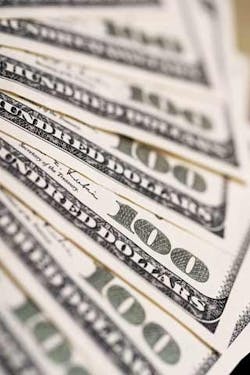Expenses Creep, and Gross Profit Leaks: Watch the ‘Extras’ That Affect Operating Expenses
I worked side-by-side with a great retail district manager when I was younger. His name was Fred, and he used to say, “Anybody can put numbers on an operating statement; it’s where ya put ’em that matters.” Fred had a lot of one-liners. He was an interesting guy, to say the least, but most of his sayings and one-liners held a lot of truth.
Fred was 15 years my senior and had worked for some of the industry’s best retailers. He had a knack for improving the bottom-line profit at small, medium and larger volume stores. I’m going to share a few of his tips in this article.
I learned to hang with Fred. I watched him interact with store managers and counter sales staff. He was good with service techs and could talk with anyone. The first thing I learned from Fred was the power of the one-liner. I started coming up with my own while reviewing the monthly operation statements with my managers. I used to say, “Expenses creep, and gross profit leaks.” The power of a meaningful one-liner is its ability to be remembered and the fact it often holds such beneficial truth.
When running a retail operation, costs can sneak up on you: insurance, overtime hours, commissions, uniform changes, shop towels, supplies, utilities, etc. It seemed when my store managers received their monthly operating statements, I rarely received a call complaining the expenses were too low; to the contrary, the store manager was sure the home office was dumping expenses into their operating statement that belonged elsewhere. In reality, rarely was there such a condition. The operating statement is like a monthly report card.
What made Fred such a great district manager and worthy of emulating was that over the years, he learned how to watch the numbers while running a retail store. Things Fred never worried about? He never worried about price increases. He had a mind set that price increases were not a problem. I recall many store managers would become overly concerned about tire price increases, and in their minds, they knew they would have to start discounting or lose sales. Fred took price increases in stride. He never worried about charging a fair price for products.
Fred was a bulldog on wages. He recognized that nonproductive overtime caused expenses to creep. If a store paid overtime to complete a profitable ticket, then that was acceptable. He understood the difference and made sure his managers did, too.
Fred kept an eye on the little extras, such as the number of floor mats in a store. There are some supply companies that are famous for suggesting additional items that only cost a small extra weekly amount. Often stores managers lacking an eye for creeping expenses would approve the additional expenditures.
In a retail store, every day there is a vehicle or two that with proper handling could result in additional gross profit. I’m not talking about over-selling or over-charging, but a vehicle that requires extra attention, and with proper attention can result in more gross profit dollars for the day.
Fred had a knack for identifying that vehicle. He had a knack for engaging with that customer to completely understand their needs and desires. This helps offset the gross profit leaks that naturally occur during the regular ebb and flow of any given retail day.
Fred was a master at buying time. Store personnel who are rushed cause leaks in gross profit. Customers or vehicles that don’t receive enough attention will have a negative effect on gross profit intake. Fred would shop for parts. For the critical vehicles and customers who required more time and attention, once he bought some extra time, he would shop for extra gross profit. One extra call to an additional supplier could mean a measurable savings that fill a leak. The extra gross profit that is generated on any sales ticket has only one place to go after it gets hit by expenses, the bottom line.
Another thing Fred and I used to talk about when we hung out together was that the fastest way to make a buck is to save a buck. The $12 per week that doesn’t get spent on floor mats equals a monthly savings of $51.60. Some might say, “No, Wayne, that’s $48.” Well, there’s 4.3 weeks in a month, so do the math.
A few more one-liners from the Fred and Wayne Show:
- “To save money, you must actually spend less.”
- “The gross profit you need is sitting in bay five.”
Remember, “Expenses creep, and gross profit leaks,” and, “Anybody can put numbers on an operating statement; it’s where ya put ’em that matters.” ■
Wayne Williams is president of ExSell Marketing Inc., a “counter intelligence” firm based in La Habra, Calif. He can be reached at [email protected].
To see more of Wayne Wiliams' Counter Intelligence columns, click:
People. Process. Profit: Keep Your Focus
About the Author
Wayne Williams
Tire retailing expert Wayne Williams was president of ExSell Marketing Inc. and longtime author of MTD’s popular “Counter Intelligence” column. He died in July 2018.
